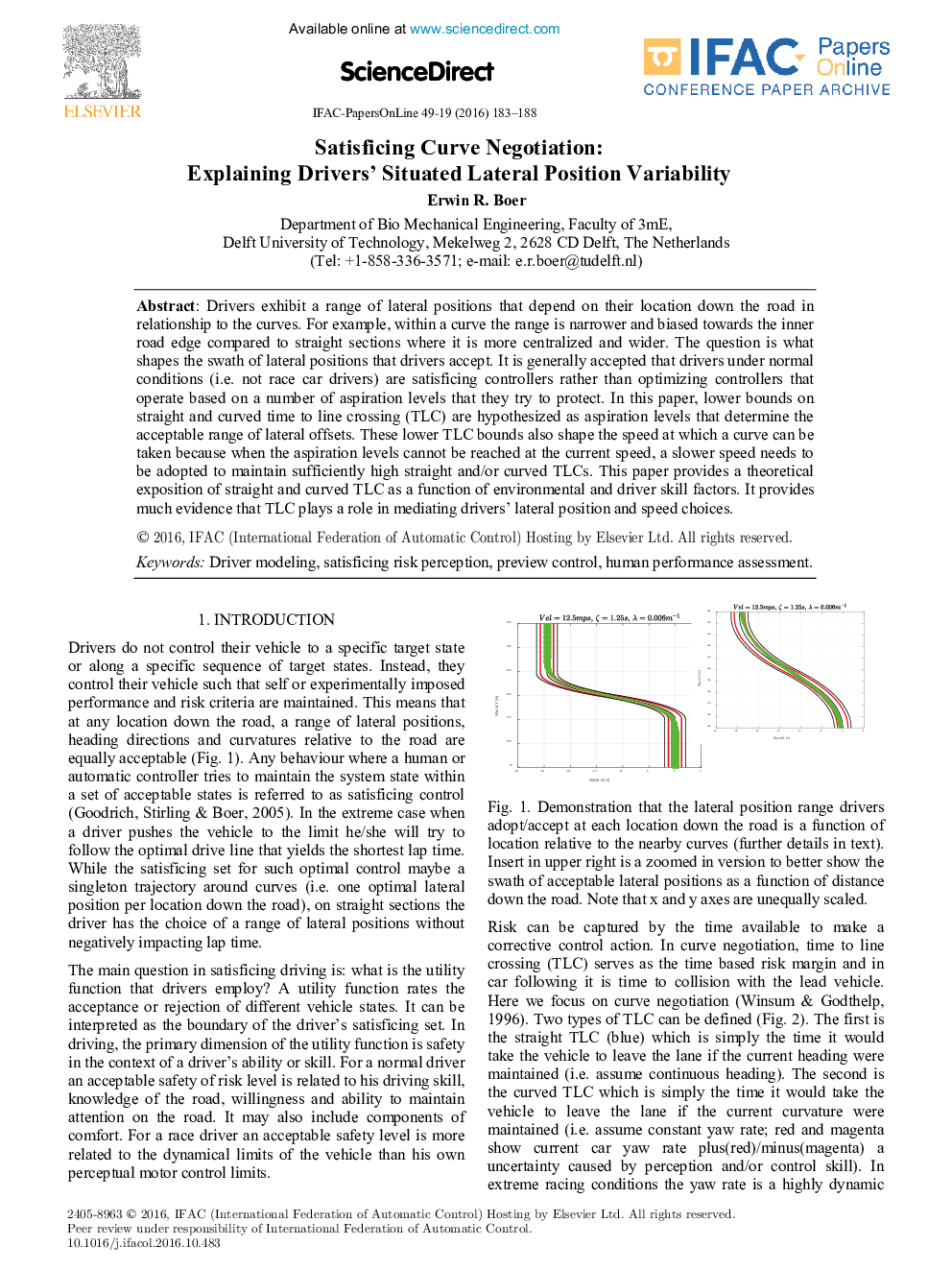| Article ID | Journal | Published Year | Pages | File Type |
|---|---|---|---|---|
| 5002742 | IFAC-PapersOnLine | 2016 | 6 Pages |
Abstract
Drivers exhibit a range of lateral positions that depend on their location down the road in relationship to the curves. For example, within a curve the range is narrower and biased towards the inner road edge compared to straight sections where it is more centralized and wider. The question is what shapes the swath of lateral positions that drivers accept. It is generally accepted that drivers under normal conditions (i.e. not race car drivers) are satisficing controllers rather than optimizing controllers that operate based on a number of aspiration levels that they try to protect. In this paper, lower bounds on straight and curved time to line crossing (TLC) are hypothesized as aspiration levels that determine the acceptable range of lateral offsets. These lower TLC bounds also shape the speed at which a curve can be taken because when the aspiration levels cannot be reached at the current speed, a slower speed needs to be adopted to maintain sufficiently high straight and/or curved TLCs. This paper provides a theoretical exposition of straight and curved TLC as a function of environmental and driver skill factors. It provides much evidence that TLC plays a role in mediating drivers' lateral position and speed choices.
Keywords
Related Topics
Physical Sciences and Engineering
Engineering
Computational Mechanics
Authors
Erwin R. Boer,
